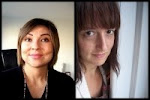(Washington, D.C.) - As intergovernmental negotiators in Bonn are yet again, finding it impossible to reach a mutual agreement on Climate Change, digital savvy Latino-environmentalists are using technological innovation within and across borders to unite new and legacy media through organizing for climate justice. Join us for our panel during Digital Capital Week in Washington, D.C., on June 13th from 3 to 5pm, hosted at the Energy Action Coalition to find out more. The panel 'Latinos, Technology and the Environment,' examines the opportunity presented by the digital sphere as it relates to Latinos and the environment. We will discuss our participation in the recent World's People Conference on Climate Change and the Rights of Mother Earth in Cochabamba, Bolivia and explore the role of technology in organizing the grassroots movement for the next annual meeting of intergovernmental climate negotiators (COP16) which coincides with theKLIMAFORUM10 both scheduled for November in Cancun, Mexico.
At 49.7million, Latinos are the fastest growing and largest 'minority' population in the United States. In a recent poll commissioned by the National Resource Defense Council (NRDC), 66 percent of Hispanics (Latinos) said tackling climate change should be a “high” or “very high” priority with 41 percent supporting the regulation of carbon emissions.” The National Latino Coalition on Climate Change (NLCCC) and the Commission to Engage African Americans on Climate Change (CEAACC), conducted a joint study in swing States across the U.S. that backs these findings. An overwhelming majority of Latino voters in Florida (80%), Nevada (67%) and Colorado (58%) say they are more likely to vote for a U.S. Senate candidate that supports proposals for fighting global warming.
The concern for climate action amongst Latinos in the United States is directly linked to the fact that they live or work in the most environmentally degraded areas, are amongst the most climate vulnerable in the United States and come from countries across Latin America where climate change has already wreaked havoc and caused hardship for their families and friends. Mainstream environmental organizations have yet to fully engage the Latino community online although, their presence as a group within social media networks is more active than non-Latinos. The Interactive Advertising Bureau (IAB) reports that 59.5% of Latinos are online, while a March 2010 report by Forester shows them growing most in the creator, critic and collector levels of the “Social Technographics Ladder.”
The few mainstream organizations that have taken the leap, such as the NRDC with Voces Verdes, the Earth Action Network, and the Sierra Club are yet to channel mobilizing online with face to face creative space. The opportunities to cultivate support for the environment regionally by building link between US Latinos and their countries of origin have yet to be strategically explored. Conferences such as the World People's Conference on Climate Change and the Rights of Mother Earth in Bolivia, Digital Capital Week coming up in Washington, D.C., and the US Social Forum in Detroit, do away with the bureaucracy and ego of traditional conferences and create the space to organically grow common visions in a big way from the grassroots.
The integration of Web 2.0 technology into these creative spaces has facilitated diverse environmental and social justice groups to stay connected and develop common strategies that sustain time and cross sectors as well as, borders. Angela Adrar, an environmental new media communicator and Latino activist says that “Latinos in the US are growing weary of organizations that do not respond to their needs. They are sharing their experiences using bilingual communication and community muscle to change the narrative of power through social media and succeeding.” The rise of the digital activist has been a long time coming but the effectiveness, tools and ability to create real world impact is exponentially increasing as more communities of color come of age online enabling them to generate their own stories and offer their own solutions.
Kety Esquivel, Interim Executive Director of Latism, the largest organization of Latinos in Social Media and Angela Adrar, Environmental Communicator with La Trenza Leadership Eco-Hermanas will be spearheading the panel.
| Kety Esquivel (410) 500-8340 | Angela Adrar (202) 439-7724 |















RobinHolland.jpg)






